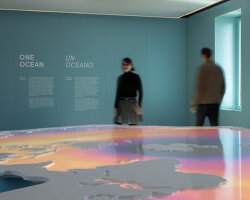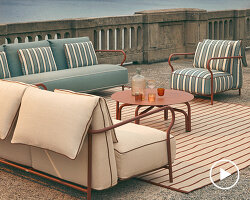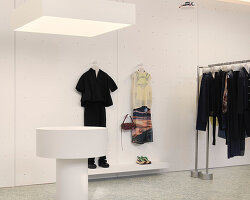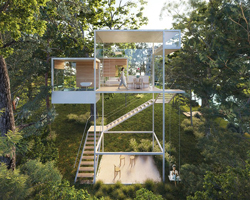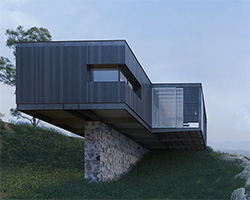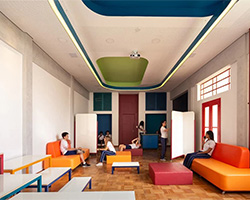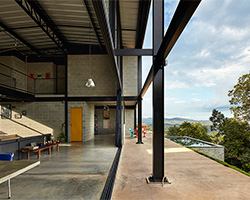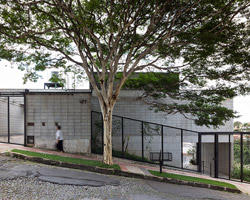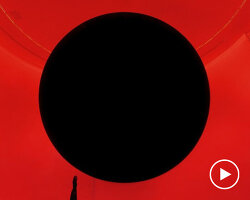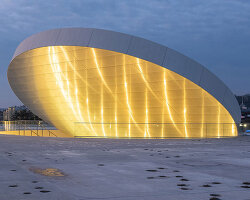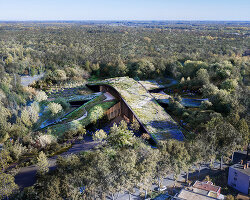following a competition launched by re-use italy, architects marcos franchini and nattalia bom conselho share their proposal to transform piscina mirabilis into a contemporary art museum. located on balcoli hill close to naples, piscina mirabilis is a roman reservoir built in the 1st century AD by by emperor augustus. this concept by franchini and bom conselho proposes to conserve the ancient heritage of the structure and bring it up to date without hiding it.

piscina path, image © amanda castilho
to begin the design process, marcos franchini and nattalia bom conselho first analyzed the existing architecture under three themes: history, territory, and use. with regard to its history, the final design encourages visitors to contemplate the memory of the place by carefully revealing it along the exhibition path. under the theme of territory, the architects have considered the materials, topography, and the connections with other cities in the region while also engaging with campania’s waste issue. and finally, for use, the proposal balances between past and present functions by highlighting the original aspect of the tank while creating a contemporary space for artists.

piscina path, image © amanda castilho
the proposed exhibition path takes visitors on a journey through the aqueduct that once brought water from its source in serino to the detours of the rocky massifs and vesuvius, supplying the cities of pompeii, neapolis, puteoli, before reaching bacoli hill. the path is a sinuous architectural gesture that breaks the rigid geometry of the 48 columns that make up the rectangular plan. their proposal also brings water back into the reservoir, creating shimmering reflections of the artworks and the space.
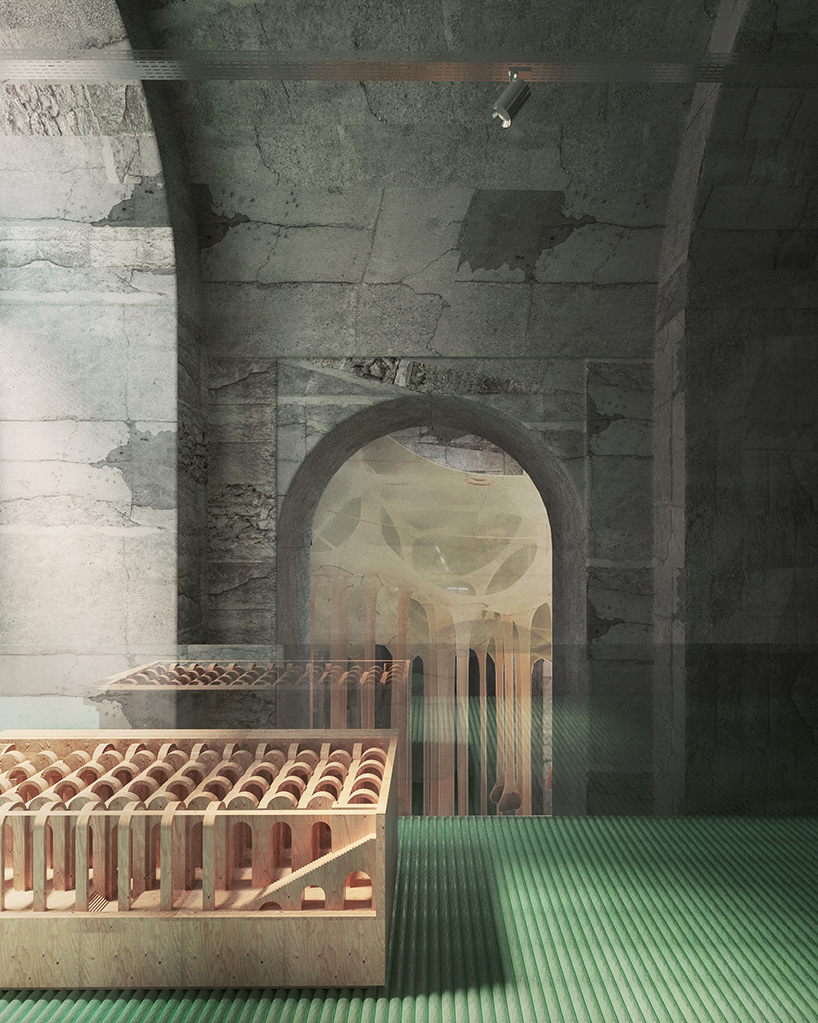
mezzanine, image © amanda castilho
a staircase located against the west wall leads to the ‘mezzanine of contemplation’. it is shaped like an airlock and, situated just below the vaults, offers a panorama that overlooks the rest of the galleries and presents the history of the place and the region. other mezzanines, on different levels, punctuate the route and provide multiple views of the works on display.

terrace canopy, image © amanda castilho
an important aspect of this scheme is the dialogue between the artwork and the architecture. to achieve this, an artists residency is included in the project, inviting artists to create their work in the bowels of this ancient roman reservoir. installed against the southeast wall, this production space is designed like a glass box, allowing visitors to witness the creative process and transforming the exhibition space into a real laboratory.

terrace, image © amanda castilho
on the roof of piscina mirabilis, three cube-shaped structures house a bar, bookshop and administrative offices. the fourth structure is an auditorium that can be completely dismantled. the floor of this rooftop space is made of copper tubes that will oxidize in time, changing to a turquoise color. a large roof plane made of copper plate and supported by corten steel pillars covers the volumes. thin PV panels are installed on top of the plate to contribute to the energy autonomy of the building. this level also includes a diversity of plantlife native to the campania region (holm oak, shrub, myrtle, laurel, rosemary, sage, etc).

axonometric
with regard to materiality, copper is used throughout the project to offer an aesthetic that is both ancient and contemporary. like the flooring on the roof level, the exhibition route is also made of copper tubes. in addition to copper, marcos franchini and nattalia bom conselho have also considered the region’s waste crisis by incorporating recycled PET polyester membranes and insulation into the design.

cistern plan
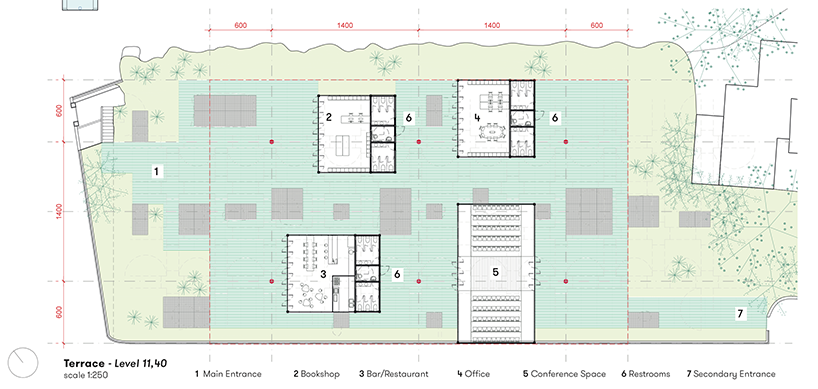
terrace plan
project info:
project name: digestion: a production center at piscina mirabilis
location: piscina mirabilis, bacoli, naples, italy
competition: reuse the roman ruin
architects: marcos franchini and nattalia bom conselho
art curator: théo castaings
3D renderings: amanda castilho
designboom has received this project from our ‘DIY submissions‘ feature, where we welcome our readers to submit their own work for publication. see more project submissions from our readers here.
edited by: lynne myers | designboom


